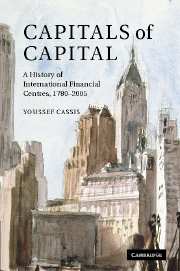Book contents
- Frontmatter
- Contents
- List of tables
- Foreword
- Preface
- Introduction
- 1 The age of private bankers, 1780–1840
- 2 The concentration of capital, 1840–1875
- 3 A globalised world, 1875–1914
- 4 Wars and depression, 1914–1945
- 5 Growth and regulation, 1945–1980
- 6 Globalisation, innovation and crisis, 1980–2009
- Conclusion
- Glossary
- Notes
- Bibliography
- Index
4 - Wars and depression, 1914–1945
Published online by Cambridge University Press: 05 June 2012
- Frontmatter
- Contents
- List of tables
- Foreword
- Preface
- Introduction
- 1 The age of private bankers, 1780–1840
- 2 The concentration of capital, 1840–1875
- 3 A globalised world, 1875–1914
- 4 Wars and depression, 1914–1945
- 5 Growth and regulation, 1945–1980
- 6 Globalisation, innovation and crisis, 1980–2009
- Conclusion
- Glossary
- Notes
- Bibliography
- Index
Summary
On 4 August 1914, the day that Britain declared war on Germany, Gaspard Farrer, one of Baring Brothers' partners, noted in a letter: ‘It is mortifying in the extreme to find how instantaneously the credit edifice which we have built for generations could tumble to pieces in a night.’ At the time, this view was widely shared in the major international financial centres. Nevertheless, few imagined that it would soon be known as the Great War. In this respect, Farrer's remark was fairly typical of bankers' short-sighted yet premonitory views. While being preoccupied above all by the serious crisis suddenly facing the City's accepting houses, at the same time he had a foreboding of a phenomenon on an altogether different scale – that of the end of an era, or of the transition from one economic order to another.
The period described by the historian Eric Hobsbawm as ‘the age of catastrophe’ had profound repercussions on life in the international financial centres. Two world wars and the most severe economic crisis of the twentieth century indeed brought about major changes in the world economic and political order, the most important of which was the transfer of world leadership from Britain to the United States. This inevitably had an impact on the power struggle between Wall Street and the City.
- Type
- Chapter
- Information
- Capitals of CapitalA History of International Financial Centres 1780–2005, pp. 143 - 199Publisher: Cambridge University PressPrint publication year: 2006



